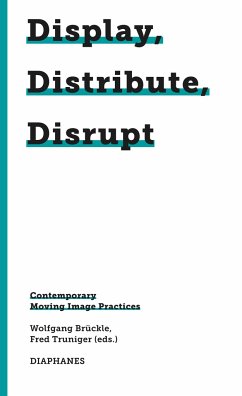The field of audiovisual media has changed dramatically over the last two decades. Until recently, the amount of audiovisual technology was still manageable, channels of distribution were few, the places where moving images were consumed were for the most part limited to cinemas, the domestic television set, and galleries or art museums. Also, both the producers and the audiences of such content clearly identified as human beings. Those days are over. The digitization of image production and distribution have proved a massive disruption to the traditional ecology of the moving image. This publication maps new contributors and new conditions for creative work in discussions of animal spectators, child producers, all-encompassing gazes and the marketing interests of big corporations, the origins of new formats and new practices in the widening sphere of audiovisual media.
With contributions by Wolfgang Brückle, Samuel Frei, Maximilian Jablonowski, Marek Jancovic, FlorianKrautkrämer, Alexandra Schneider, Fred Truniger, Axel Vogelsang, Birk Weiberg, Matthias Wittmann.
Hinweis: Dieser Artikel kann nur an eine deutsche Lieferadresse ausgeliefert werden.
With contributions by Wolfgang Brückle, Samuel Frei, Maximilian Jablonowski, Marek Jancovic, FlorianKrautkrämer, Alexandra Schneider, Fred Truniger, Axel Vogelsang, Birk Weiberg, Matthias Wittmann.
Hinweis: Dieser Artikel kann nur an eine deutsche Lieferadresse ausgeliefert werden.








